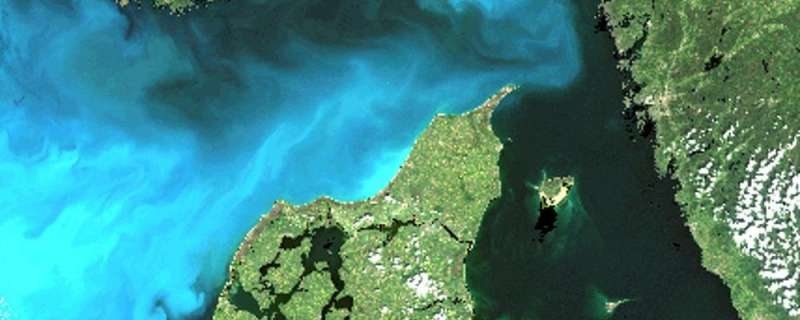New method makes it easier to predict algae blooms

Toxic algae can pose serious problems. Mussels become poisonous and aquaculture can be wiped out. But despite the monitoring of algae and toxins, it is very difficult to forecast when an algal bloom will occur. Now a research team at the University of Gothenburg in co-operation with Oslo University has discovered a way to improve the ability to predict toxic algae blooms.
"By measuring the number of predators of toxic algae in the water, toxic algae blooms can be predicted with greater certainty," says Erik Selander, a marine researcher at the University of Gothenburg.
Poisonous algae sense the presence of zooplankton, causing them to increase their production of toxins to protect themselves from being eaten. Until now there has not been enough high-resolution data for zooplankton to be used for harmful algae forecasts. But the research team at the University of Gothenburg has found a shortcut that solved the problem.
"A simple analysis of a chemical marker from zooplankton in mussels could be used to improve forecasting," says Erik Selander, who heads the research effort. "The analysis makes it possible to predict toxic algae outbreaks further in advance and with more accuracy than before."
Important implications for food production and environmental monitoring
The method is important not only for shellfish-eating coastal residents but also for marine food producers.
"Norwegian aquaculturists lost hundreds of millions of euros in the summer of 2019 when a toxic algae bloom swept along the coast, killing millions of salmon. With earlier warnings, fish farmers have a chance to take action to minimize losses. In addition, mussel farmers can plan their harvest better."
Food production from aquaculture also plays an important role in the transition to a more sustainable future, and this places higher demands on the monitoring of toxins.
As a next step, the researchers will test the method on a larger amount of data to see if it can be applied to more types of toxic algae than those they have studied so far.
"We hope the method will be useful in Swedish environmental monitoring."
Name of the article: Eavesdropping on plankton—can zooplankton monitoring improve forecasting of biotoxins from harmful algae blooms?
Algal blooms can become so dense that they discolor the water. However, most toxic algal blooms on the west coast of Sweden do not discolor the water.
The copepods prefer nontoxic food, so the toxic algae become more toxic and numerous because the copepod eat their competitors. The effect is the same as when toxic buttercups become common in a grazed pasture. The grazing livestock avoid them and eat the other plants, allowing the buttercups to have free rein.
More information: Aubrey Trapp et al, Eavesdropping on plankton—can zooplankton monitoring improve forecasting of biotoxins from harmful algae blooms?, Limnology and Oceanography (2021). DOI: 10.1002/lno.11891
Provided by University of Gothenburg




















